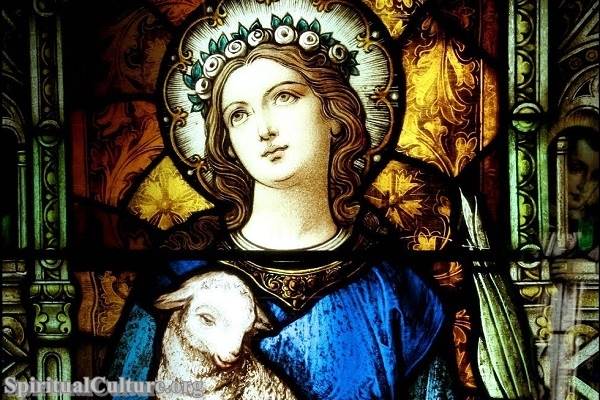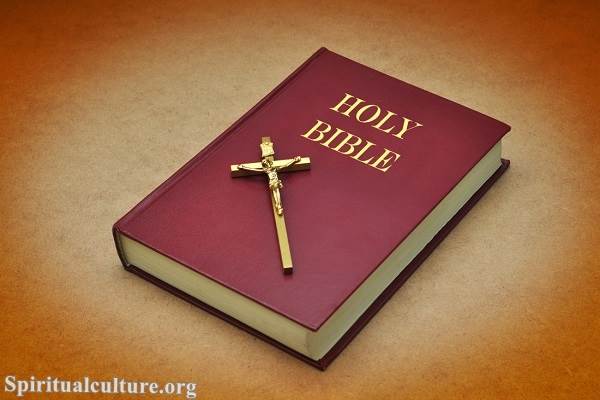The image is unmistakable: a heart, pierced and aflame, encircled by thorns and radiating light. It is the Sacred Heart of Jesus — a powerful symbol cherished deeply within the Catholic tradition. But beyond the imagery lies a profound spiritual reality that has stirred devotion, inspired countless saints, and shaped Catholic piety for centuries.
As Spiritual Culture, we invite you to step into the mystery of the Sacred Heart — not just as an image to behold, but as a truth to be encountered. This article explores why Catholics venerate the Sacred Heart, tracing its historical origins, theological significance, and the timeless invitation it offers: to receive the love that burns for all humanity.
The Heart: More Than a Symbol
The Language of the Heart in Scripture
In every culture, the heart symbolizes more than the organ that sustains physical life. It represents the seat of love, will, and desire. In the Bible, the heart is where decisions are made, where sin is born, and where God desires to dwell:
“I will give you a new heart and put a new spirit in you” (Ezekiel 36:26).
In Jesus, this reaches its divine climax. His heart is not metaphor alone — it is the living fountain of divine love made visible in flesh and blood.
Christ’s Heart Revealed in the Gospels
Throughout the Gospels, we see glimpses of Jesus’ heart in action: moved with compassion for the crowds, weeping at Lazarus’s tomb, longing to gather Jerusalem like a mother hen (Luke 13:34). But the most piercing image of all comes from the crucifixion:
“One of the soldiers pierced His side with a spear, and at once blood and water came out” (John 19:34).
The early Church Fathers interpreted this moment not only as a physical wound, but as the opening of the heart of Christ — pouring out the sacraments, the Church, and divine mercy for the world.
The Birth of the Devotion to the Sacred Heart
Early Echoes and Medieval Growth
While the devotion formally blossomed in the 17th century, its roots stretch back much further. Mystics like St. Bernard of Clairvaux, St. Gertrude the Great, and St. Bonaventure spoke of Jesus’ heart as the center of divine love and a refuge for souls.
By the late Middle Ages, the wounded heart of Christ began appearing more frequently in art and private devotions. Yet it was in the 1600s that a new light would shine.
St. Margaret Mary Alacoque and the Sacred Revelations
In the quiet town of Paray-le-Monial, France, a Visitation nun named Margaret Mary Alacoque received a series of visions of Jesus between 1673–1675. In them, Christ revealed His Sacred Heart as “a burning furnace of charity,” lamenting how this love was ignored, wounded, and rejected.
“Behold this Heart which has so loved men that it has spared nothing… yet in return I receive ingratitude.”
He asked her — and through her, the Church — to promote devotion to His Heart, especially through:
- Frequent Holy Communion, particularly on First Fridays
- The Holy Hour of Reparation, recalling Gethsemane
- A Feast Day honoring His Sacred Heart
These requests sparked a spiritual movement that would ripple across the world.
Theological Meaning of the Sacred Heart
Love Incarnate
The Sacred Heart is not a separate devotion tacked onto Catholic belief. It is a lens — a radiant window — through which the entire Gospel is viewed. It proclaims: God is love, and that love has a human heart.
“God proves His love for us in this: while we were still sinners, Christ died for us” (Romans 5:8).
The heart of Jesus is the union of divine and human love. It feels. It suffers. It overflows. It is not a cold doctrine but a living fire—inviting us not just to believe in Jesus, but to love Him and be loved by Him.
The Heart Wounded by Sin — Yet Always Open
The crown of thorns encircling the heart is a stark reminder: Jesus loves us even through rejection and pain. The flames are His burning charity. The cross planted in His heart speaks of sacrifice. This is not sentimental devotion — it is a call to respond to divine love with our whole selves.
Mercy and Reparation
The Sacred Heart also carries a message of reparation — not to “pay God back,” but to console a heart that suffers still from humanity’s indifference, violence, and coldness.
As Jesus told St. Margaret Mary, He seeks hearts who will:
“Make amends for the ingratitude and outrages of the world, by offering Me their love.”
This call invites every soul into a relationship of consolation and intercession — becoming, in a sense, a friend who stays awake in Gethsemane.
Expressions of Devotion in Catholic Life
The Feast of the Sacred Heart
In 1856, Pope Pius IX established the Feast of the Sacred Heart as a universal celebration, observed on the Friday after Corpus Christi. It is a day marked by Mass, adoration, and reparation — but more deeply, it is a day to return love for love.
First Fridays and the Promises
Catholics are encouraged to receive the Eucharist on the first Friday of nine consecutive months, honoring Jesus’ request and trusting in His “12 promises” to St. Margaret Mary — including the grace of final repentance and peace in families.
Consecration and Enthronement
Many Catholic homes, parishes, and even nations have been consecrated to the Sacred Heart, symbolically enthroning Him as King and center of life. This act is both personal and communal — saying: Jesus, reign in our hearts, our choices, our homes.
Art and Iconography
From glowing statues to vivid paintings, images of the Sacred Heart can be found in churches, schools, and homes. These are not mere decorations, but invitations to pause, reflect, and return love to the One whose heart beats with divine mercy.
The Sacred Heart and Today’s World
A Heart That Knows Suffering
In an age of anxiety, isolation, and inner wounds, the Sacred Heart speaks gently yet boldly: I understand your pain. I carry it with you.
Jesus does not offer shallow comfort. His heart bears the scars of betrayal, injustice, loneliness, and death — yet it still burns with love.
A Call to Compassionate Love
To venerate the Sacred Heart is not only to receive love, but to give it — to let our hearts be transformed. It calls us to love the poor, the broken, the forgotten — to be “other Christs” in a wounded world.
“Learn from Me, for I am meek and humble of heart” (Matthew 11:29).
Devotion is not just prayer — it is imitation.
Healing Broken Hearts
In broken relationships, addiction, despair, or guilt, many feel unlovable. But the Sacred Heart says:
“You are not beyond My love.”
Here lies one of the deepest meanings: that no one is too far gone to return. The pierced Heart remains open — always.
Sacred Texts and Saints Who Loved His Heart
The Scriptures Speak
- Psalm 34:18 – “The Lord is close to the brokenhearted and saves those who are crushed in spirit.”
- Ephesians 3:17–19 – “…that Christ may dwell in your hearts through faith… to grasp how wide and long and high and deep is the love of Christ.”
Saints of the Sacred Heart
- St. John Eudes (1601–1680): One of the earliest promoters of formal devotion to the Sacred Heart and Immaculate Heart of Mary.
- St. Margaret Mary Alacoque (1647–1690): The visionary of Paray-le-Monial whose revelations spread the devotion worldwide.
- St. Claude de la Colombière: Her spiritual director, who defended the revelations and lived them deeply.
- Pope Pius XII: In his encyclical Haurietis Aquas (1956), he affirmed the Sacred Heart as central to Catholic spirituality.
Reflect and Reimagine
The Sacred Heart of Jesus is not a relic of the past. It is a living invitation to draw near to the source of love itself — a love that bleeds, burns, and blesses. In venerating the Sacred Heart, Catholics are not merely practicing a tradition. They are responding to a call that transcends time:
“Behold this Heart… which has loved so much.”
Will you draw near to that Heart?
Whether you are faithful or faltering, wounded or wondering, the Heart of Jesus remains open. It is not a concept — it is a Person. And He is waiting for you.
Let your heart speak to His. In silence, in prayer, in love.
Let the fire of His Sacred Heart ignite yours.



